info@gerb.com
Protecting a Church from Subsidence Damage
Preventing Subsidence Damage with GERB Spring Elements
Elastic support systems, using springs, are used for many different applications worldwide. Helical steel springs provide many advantages. They ensure low natural frequencies of the entire supported structure and hence, the vibration isolation efficiency is very high. Optimizing the parameters of the springs allows the application in seismic protection systems and for extraordinary load cases like subsidence. For the spring support of large turbine generator decks, the possibility for adjustments/leveling at the pre-stressable spring elements to counteract settlement issues, was and still is one important reason to use spring elements as the state-of-the-art solution for this type of machinery.
Besides vibration isolation, spring elements can also be used to secure buildings against subsidence damage. One notable project example regarding subsidence is the securing of the Saint Remigius church, which is located in an open-cast mining area in western Germany. To protect the church against mining subsidence damages the building is supported by spring elements which compensate the movements of the foundation soil.
The project, completed in 1994, testifies to the longevity and efficiency of GERB spring elements, which have been reliably safeguarding the building against subsidence damage for over 30 years.
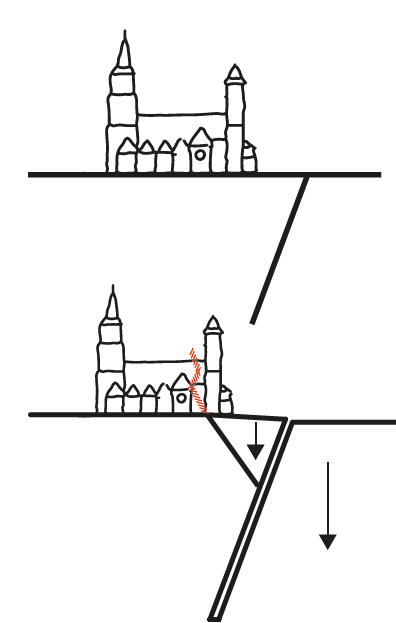
Challenge
Subsidence Threatens Historic Church: Spring Elements Protect Against Collapse
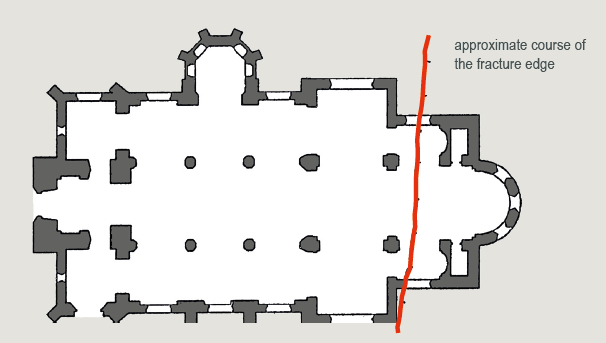
The church was built in the 12th century on a geological fault. When open-cast lignite mining became an important economic factor in the region in the 20th century, this location became a serious concern. The groundwater level was lowered for the open-cast mine, which led to differential subsidence under the church. This resulted in cracks in the façade, increasing further and further and eventually threatening the structural safety of the building. After several unsuccessful attempts to restore the church‘s stability, the decision to support it on spring elements was made.
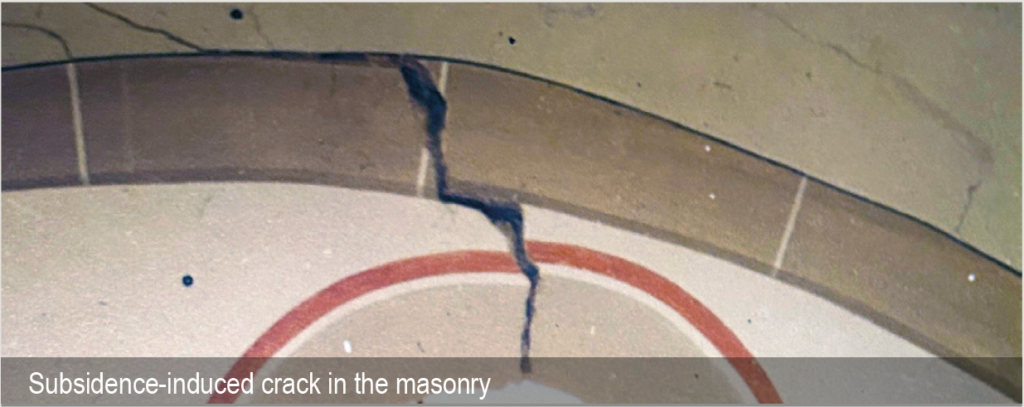
At the time, GERB had already secured various individual houses against subsidence. The challenge with Saint Remigius lays not only in the size of the project, but also in the characteristics of the building itself. In order to be supported on springs, a building must have a sufficient rigidity of its own. The centuries-old brickwork did not fulfill this requirement.
Solution
Subsidence Compensation by Retrofitting Spring Elements and a New Foundation
A new foundation made of prestressed reinforced concrete beams and reinforced concrete was built under the church in a complex retrofit. More details regarding the general procedure can be taken from [1]. Underneath this frame, the spring elements were installed, preventing excessive stresses to damage the masonry and thus guaranteeing the structural safety of the building.
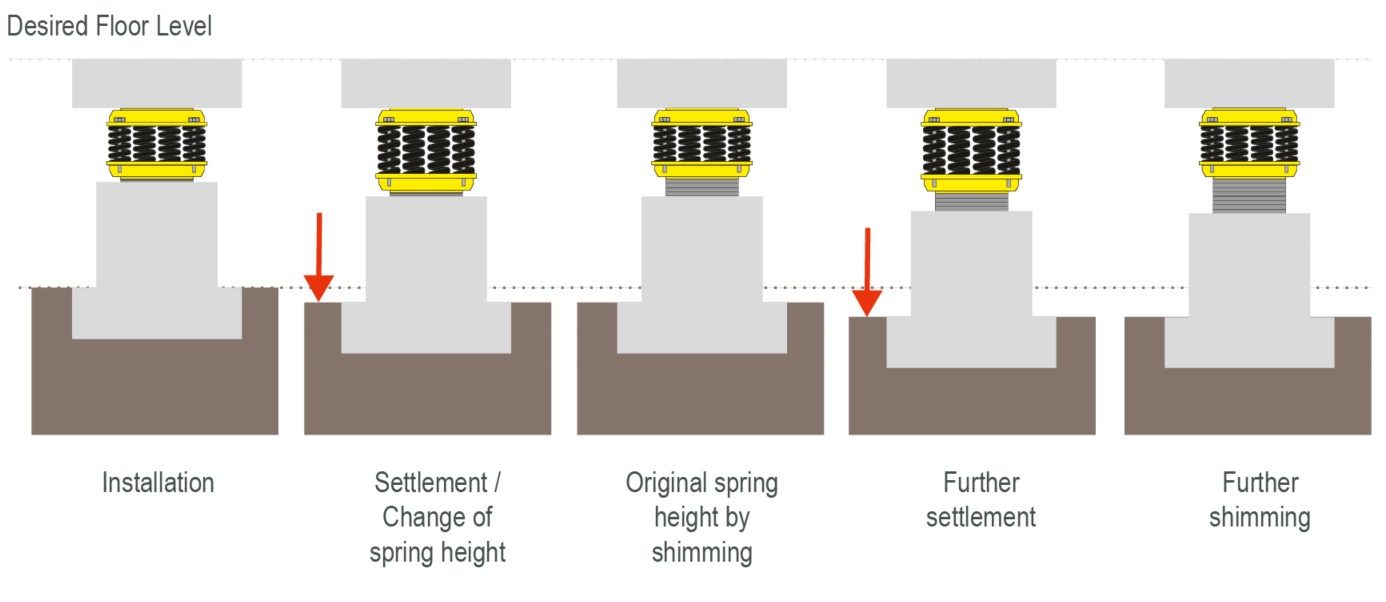
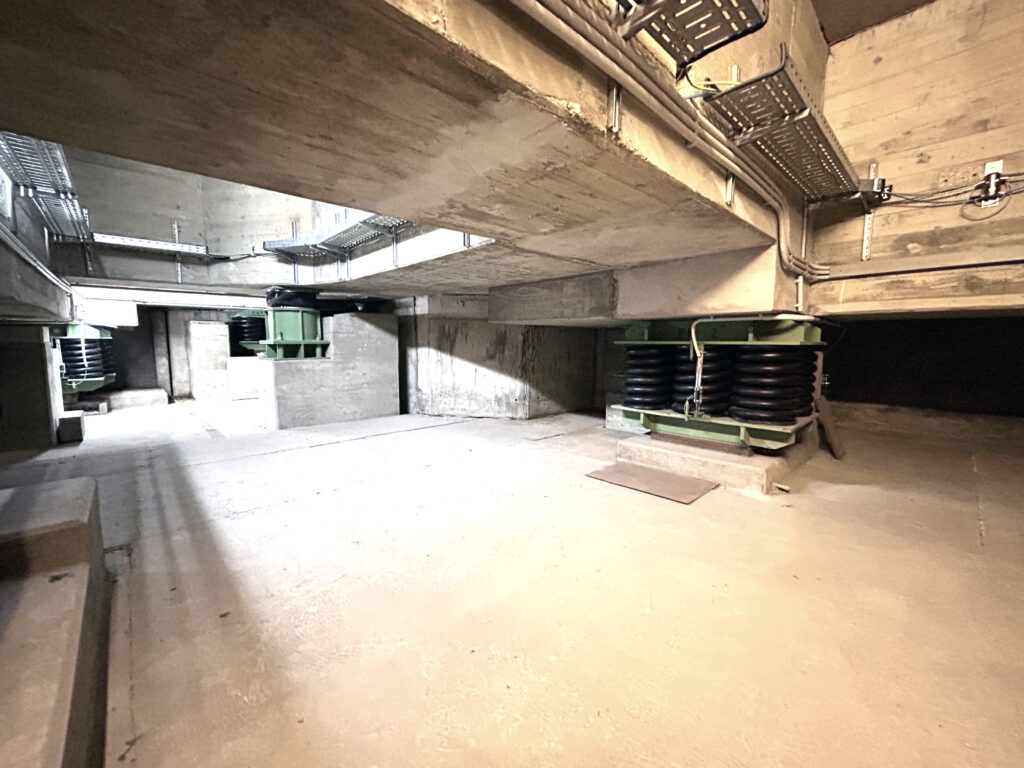
The springs operate as active compensating elements, responding immediately and auto-nomously to any movements of the foundation soil. As a result, the natural supporting forces of the ground are not lost, even if the ground subsides by several centimetres. Over the years, movements in the foundation soil that exceeded the range that could be compensated by the spring force alone, were evened out by adding levelling shims. As the open-cast mine is now at a standstill and the groundwater level is being raised again, the soil beneath the church is expected to rise again. This heave will be easily balanced out by the spring elements and, if necessary, the removal of levelling shims.
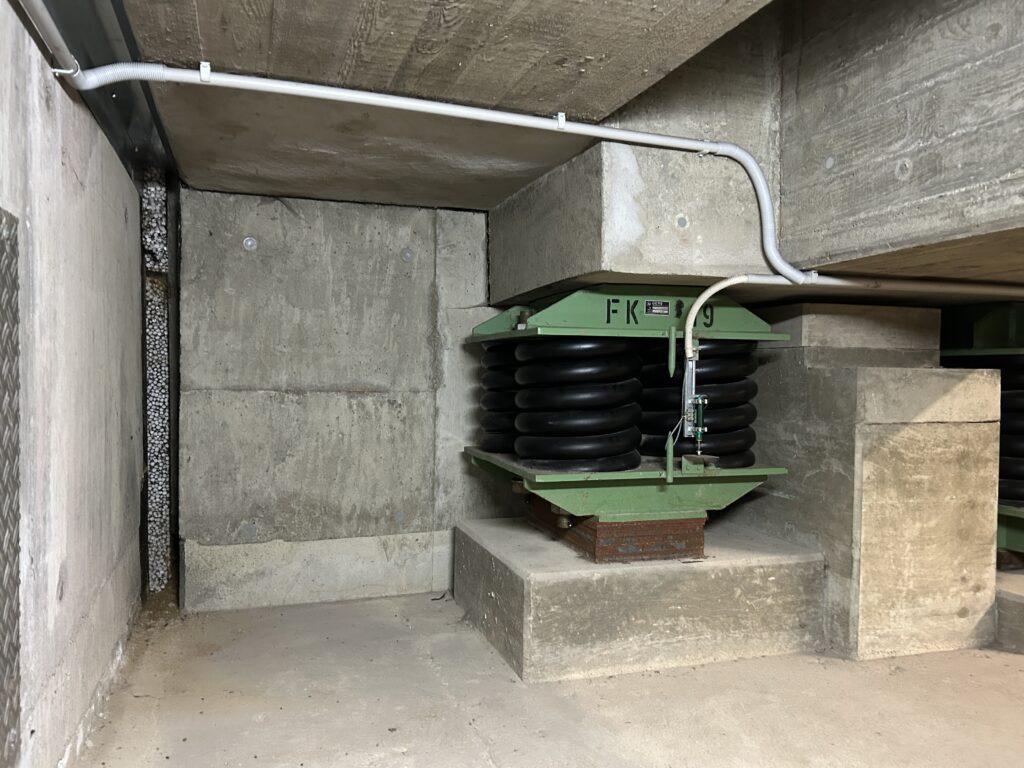
Technical Facts:
Structure: Masonry / brick work (after retrofit: supported on reinforced concrete and prestressed concrete beams)
Excitation source: Soil subsidence (+ located within seismic zone)
Devices: GERB spring elements (prestressable) & Viscodamper®
Completion: 1994
Since the completion of the renovation work in 1994, Saint Remigius is supported by GERB spring elements and has suffered no further damage. The project shows that even a complex retrofi t is possible, during which spring elements are integrated into existing structures. GERB offers a reliable and sustainable solution that prevents subsidence damage, no matter what the cause, be it mining, vibrations , shrink-swell soils or changing soils altered by climate change. Based on decades of experience, GERB is your ideal partner when it comes to safeguarding buildings against subsidence damage.
A monitoring system was installed together with the spring elements in order to track the vertical soil movements. The corresponding data supports the decision how many steel shims should be added or removed. The prestressable spring units include a lower and upper housing structure. This provides the possibility to either arrange the steel shims on top of the spring units or below the devices. During the detailed design of the support system the load case “earthquake” was considered too, as the city of Bergheim is located in an area in Germany prone to seismic activity. To improve the seismic behaviour of the system, viscous dampers have been installed in addition to the elastic spring elements, as described in [2]. Independently of this, the “Bensberg earthquake measuring station” (University of Cologne) set up a measuring station in the basement.
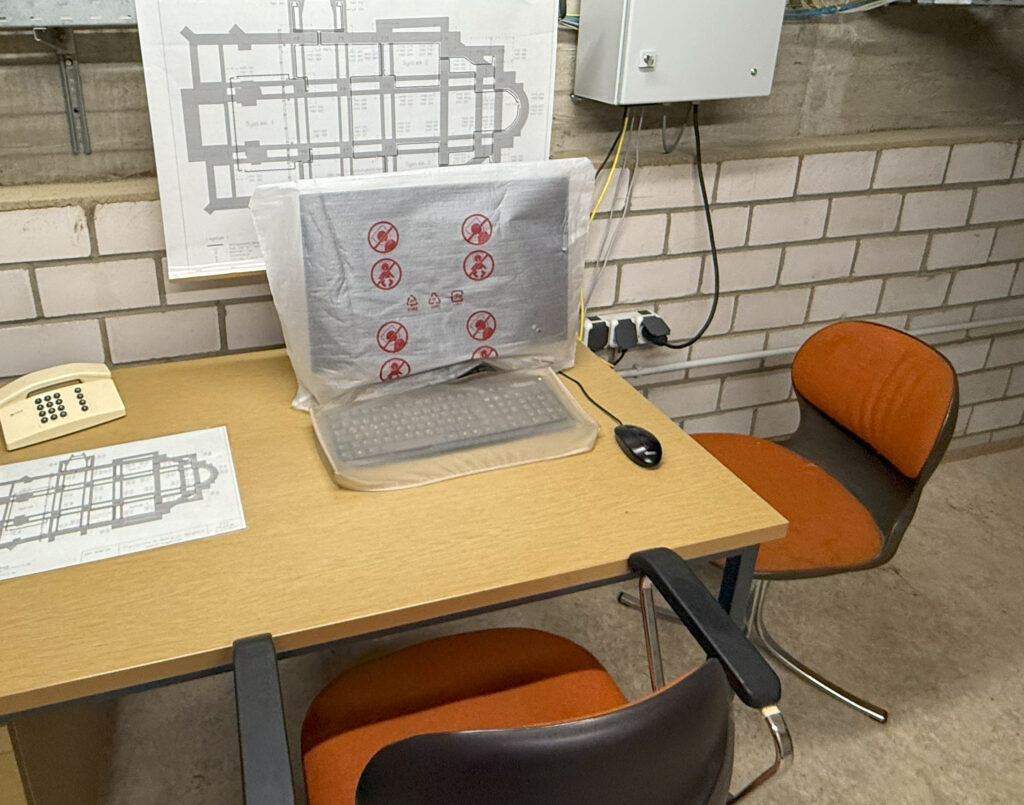
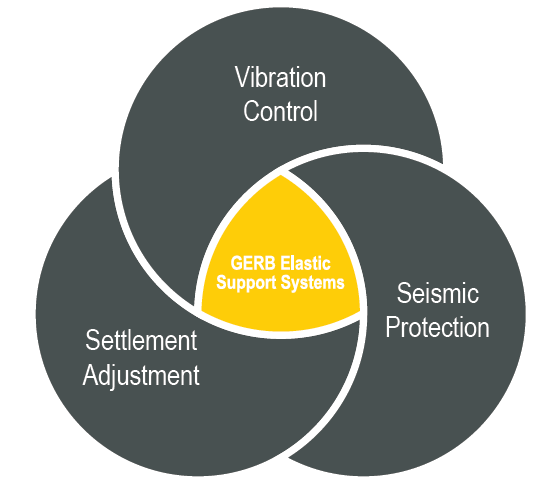
References:
[1] Rheinbraun AG “Bergschadenssicherung der katholischen Pfarrkirche St. Margareta in Mönchengladbach-Hockstein” Information brochure (only in German language available), Herausgeber: Rheinbraun AG, Abteilung Bergschäden, Köln, 1997.
[2] Siepe, D., Nawrotzki, P. and Bottoni, F. (2024). “3-D Control Systems for Existing Structures,” Proc., WCEE 2024 – 18th World Conference on Earthquake Engineering, ANIDIS & IAEE, Milan, 1-9.
Further Resources
You need further information on this topic?
Please do not hesitate to contact us with your individual question.
One of our project engineers will get back to you shortly.
Protecting a Church from Subsidence Damage
Preventing Subsidence Damage with GERB Spring Elements

Elastic support systems, using springs, are used for many different applications worldwide. Helical steel springs provide many advantages. They ensure low natural frequencies of the entire supported structure and hence, the vibration isolation efficiency is very high. Optimizing the parameters of the springs allows the application in seismic protection systems and for extraordinary load cases like subsidence. For the spring support of large turbine generator decks, the possibility for adjustments/leveling at the pre-stressable spring elements to counteract settlement issues, was and still is one important reason to use spring elements as the state-of-the-art solution for this type of machinery.
Besides vibration isolation, spring elements can also be used to secure buildings against subsidence damage. One notable project example regarding subsidence is the securing of the Saint Remigius church, which is located in an open-cast mining area in western Germany. To protect the church against mining subsidence damages the building is supported by spring elements which compensate the movements of the foundation soil.
The project, completed in 1994, testifies to the longevity and efficiency of GERB spring elements, which have been reliably safeguarding the building against subsidence damage for over 30 years.
Protecting a Church from Subsidence Damage
Preventing Subsidence Damage with GERB Spring Elements
Elastic support systems, using springs, are used for many different applications worldwide. Helical steel springs provide many advantages. They ensure low natural frequencies of the entire supported structure and hence, the vibration isolation efficiency is very high. Optimizing the parameters of the springs allows the application in seismic protection systems and for extraordinary load cases like subsidence. For the spring support of large turbine generator decks, the possibility for adjustments/leveling at the pre-stressable spring elements to counteract settlement issues, was and still is one important reason to use spring elements as the state-of-the-art solution for this type of machinery.
Besides vibration isolation, spring elements can also be used to secure buildings against subsidence damage. One notable project example regarding subsidence is the securing of the Saint Remigius church, which is located in an open-cast mining area in western Germany. To protect the church against mining subsidence damages the building is supported by spring elements which compensate the movements of the foundation soil.
The project, completed in 1994, testifies to the longevity and efficiency of GERB spring elements, which have been reliably safeguarding the building against subsidence damage for over 30 years

Challenge
The church was built in the 12th century on a geological fault. When open-cast lignite mining became an important economic factor in the region in the 20th century, this location became a serious concern. The groundwater level was lowered for the open-cast mine, which led to differential subsidence under the church. This resulted in cracks in the façade, increasing further and further and eventually threatening the structural safety of the building. After several unsuccessful attempts to restore the church‘s stability, the decision to support it on spring elements was made.


Challenge
The church was built in the 12th century on a geological fault. When open-cast lignite mining became an important economic factor in the region in the 20th century, this location became a serious concern. The groundwater level was lowered for the open-cast mine, which led to differential subsidence under the church. This resulted in cracks in the façade, increasing further and further
and eventually threatening the structural safety of the building. After several unsuccessful attempts to restore the church‘s stability, the decision to support it on spring elements was made.
At the time, GERB had already secured various individual houses against subsidence. The challenge with Saint Remigius lay not only in the size of the project, but also in the characteristics of the building itself. In order to be supported on springs, a building must have a suffi cient rigidity of its own. The centuries-old brickwork did not fulfi l this requirement.


Solution
Subsidence Compensation by Retrofitting Spring Elements and a New Foundation

Technical Facts:
Structure: Masonry / brick work (after retrofit: supported on reinforced concrete and prestressed concrete beams)
Excitation source: Soil subsidence (+ located within seismic zone)
Devicess: GERB spring elements (prestressable) & Viscodamper®
Completion: 1994

A new foundation made of prestressed reinforced concrete beams and reinforcedconcrete was built under the church in a complex retrofit. More details regarding the general procedure can be taken from [1]. Underneath this frame, the spring
elements were installed, preventing excessive stresses to damage the masonry and thus guaranteeing the structural safety of the building.
The springs operate as active compensating elements, responding immediately and autonomously to any movements of the foundation soil. As a result, the natural supporting forces of the ground are not lost, even if the ground subsides by several centimetres. Over the years, movements in the foundation soil that exceeded the range that could be compensated by the spring force alone, were evened out by adding levelling shims. As the open-cast mine is now at a standstilland the groundwater level is being raised again, the soil beneath the church is expected to rise again. This heave will be easily balanced out by the spring elements and, if necessary, the removal of levelling shims.

Implementation
Over 30 Years in Operation: A Sustainable and Reliable Solution
Since the completion of the renovation work in 1994, Saint Remigius is supported by GERB spring elements and has suffered no further damage. The project shows that even a complex retrofi t is possible, during which spring elements are integrated into existing structures. GERB offers a reliable and sustainable solution that prevents subsidence damage, no matter what the cause, be it mining, vibrations , shrink-swell soils or changing soils altered by climate change. Based on decades of experience, GERB is your ideal partner when it comes to safeguarding buildings against subsidence damage.
A monitoring system was installed together with the spring elements in order to track the vertical soil movements. The corresponding data supports the decision how many steel shims should be added or removed. The prestressable spring units include a lower and upper housing structure. This provides the possibility to either arrange the steel shims on top of the spring units or below the devices. During the detailed design of the support system the load case “earthquake” was considered too, as the city of Bergheim is located in an area in Germany prone to seismic activity. To improve the seismic behaviour of the system, viscous dampers have been installed in addition to the elastic spring elements, as described in [2]. Independently of this, the “Bensberg earthquake measuring station” (University of Cologne) set up a measuring station in the basement.

References:
[1] Rheinbraun AG “Bergschadenssicherung der katholischen Pfarrkirche St. Margareta in Mönchengladbach-Hockstein” Information brochure (only in German language available), Herausgeber: Rheinbraun AG, Abteilung Bergschäden, Köln, 1997.
[2] Siepe, D., Nawrotzki, P. and Bottoni, F. (2024). “3-D Control Systems for Existing Structures,” Proc., WCEE 2024 – 18th World Conference on Earthquake Engineering, ANIDIS & IAEE, Milan, 1-9.
Solution
Subsidence Compensation by Retrofitting Spring Elements and a New Foundation

A new foundation made of prestressed reinforced concrete beams and reinforced concrete was built under the church in a complex retrofit. More details regarding the general procedure can be taken from [1]. Underneath this frame, the spring
elements were installed, preventing excessive stresses to damage the masonry and thus guaranteeing the structural safety of the building.
The springs operate as active compensating elements, responding immediately and autonomously to any movements of the foundation soil. As a result, the natural supporting forces of the ground are not lost, even if the ground subsides by several centimetres. Over the years, movements in the foundation soil that
exceeded the range that could be compensated by the spring force alone, were evened out by adding levelling shims. As the open-cast mine is now at a standstill and the groundwater level is being raised again, the soil beneath the church
is expected to rise again. This heave will be easily balanced out by the spring elements and, if necessary, the removal of levelling shims.
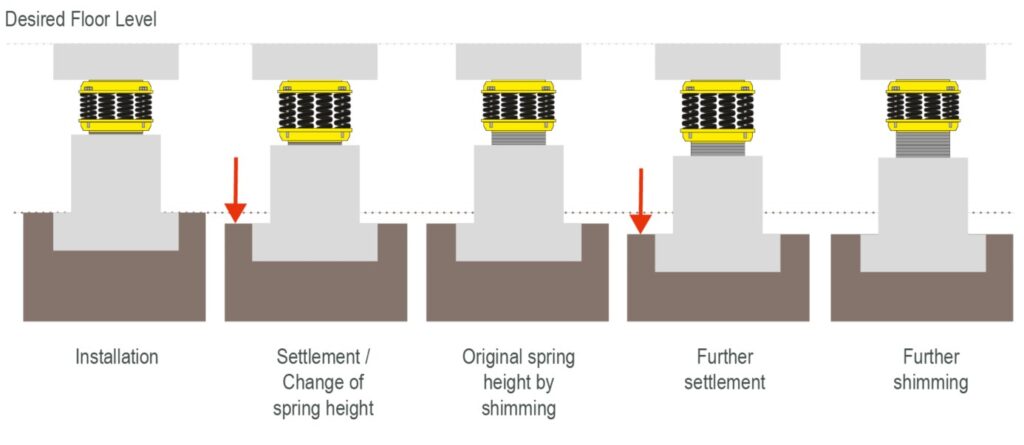
Technical Facts:
Structure: Masonry / brick work (after retrofit: supported on reinforced
concrete and prestressed concrete beams)
Excitation source: Soil subsidence (+ located within seismic zone)
Devices:
GERB spring elements (prestressable) & Viscodamper®
Completion: 1994

Implementation
Over 30 Years in Operation: A Sustainable and Reliable Solution
Since the completion of the renovation work in 1994, Saint Remigius is supported by GERB spring elements and has suffered no further damage. The project shows that even a complex retrofi t is possible, during which spring elements are integrated into existing structures. GERB offers a reliable and sustainable solution that prevents subsidence damage, no matter what the cause, be it mining, vibrations , shrink-swell soils or changing soils altered by climate change. Based on decades of experience, GERB is your ideal partner when it comes to
safeguarding buildings against subsidence damage.
A monitoring system was installed together with the spring elements in order to track the vertical soil movements. The corresponding data supports the decision how many steel shims should be added or removed. The prestressable spring units include a lower and upper housing structure. This provides the possibility
to either arrange the steel shims on top of the spring units or below the devices. During the detailed design of the support system the load case “earthquake” was considered too, as the city of Bergheim is located in an area in Germany prone to seismic activity. To improve the seismic behaviour of the system, viscous dampers have been installed in addition to the elastic spring elements, as described in [2].
Independently of this, the “Bensberg earthquake measuring station” (University of Cologne) set up a measuring station in the basement.


References:
[1]
Rheinbraun AG “Bergschadenssicherung der katholischen Pfarrkirche St. Margareta in Mönchengladbach-Hockstein” Information brochure (only in German language available), Herausgeber: Rheinbraun AG, Abteilung Bergschäden, Köln, 1997.
[2]
Siepe, D., Nawrotzki, P. and Bottoni, F. (2024). “3-D Control Systems for Existing Structures,” Proc., WCEE 2024 – 18th World Conference on Earthquake Engineering, ANIDIS & IAEE, Milan, 1-9.
Share this post
Further Resources
You need further information on this topic?
Please do not hesitate to contact us with your individual question.
One of our project engineers will get back to you shortly.
Further Resources
You need further information on this topic?
Please do not hesitate to contact us with your individual question.
One of our project engineers will get back to you shortly.